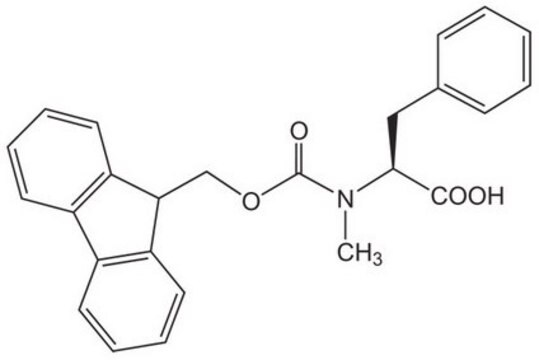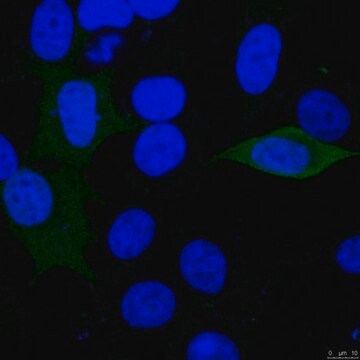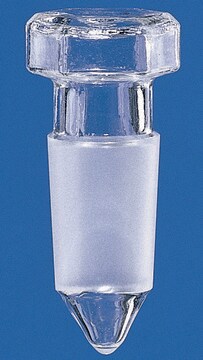822806
TOYOPEARL® AF-rProtein A-650F Bulk Media
phase rProtein A, bottle of 1 L, 45 μm particle size
Synonym(s):
TOYOPEARL® AF-rProtein A-650F Bulk Media
About This Item
Recommended Products
description
Adsorption capacity (> 45 g/L IgG (static); >30 g/L IgG (dynamic at 2 min. residence time))
Clean in Place (CIP) (0.1 M NaOH)
Phase filter (Protein A)
Shipping solvent (20% (v/v) ethanol)
product line
TOYOPEARL®
form
slurry
packaging
bottle of 1 L
manufacturer/tradename
Tosoh 22806
parameter
3 bar max. pressure
technique(s)
LPLC: suitable
matrix
hydroxylated methacrylic polymer particle platform
matrix active group
rProtein A phase
particle size
45 μm
pore size
1000 Å
pH
2-13
capacity
>30 g/L adsorption capacity (IgG)(dynamic at 2 min. residence time)
>45 g/L adsorption capacity (IgG)(static)
separation technique
affinity
Looking for similar products? Visit Product Comparison Guide
General description
The protein A ligand can either bind directly to the Fc region of an antibody or to an Fc tag that has been fused to the target of interest. Protein A chromatography is a very robust purification procedure and is used as a capture step due to its specificity and, depending on the intended use for the target molecule (antibodies for diagnostic testing), might be the only chromatographic step required to achieve adequate product purity.Toyopearl AF-rProtein A-650F utilizes a new alkaline resistant recombinant Protein A variant. This new non-animal derived ligand is bound to the base bead, Toyopearl HW-65F, using multipoint attachment. This contributes to both the new resin′s alkaline resistance and its low ligand leakages in the range 5-25ng/mg IgG.
Toyopearl AF-rProtein A-650F maintains its capacity well after repeated CIP exposure to 0.1mol/L NaOH and has reasonable tolerance to 0.5mol/L NaOH CIP.
The new resin also tolerates exposure to above ambient temperatures and if needed can be autoclaved.
Good pressure-flow characteristics and kinetics contribute to maintaining good capacity particularly at low residence times.
Specifications
Physical form
Legal Information
Signal Word
Warning
Hazard Statements
Precautionary Statements
Hazard Classifications
Flam. Liq. 3
Storage Class Code
3 - Flammable liquids
WGK
WGK 1
Flash Point(F)
103.1 °F
Flash Point(C)
39.5 °C
Choose from one of the most recent versions:
Certificates of Analysis (COA)
Sorry, we don't have COAs for this product available online at this time.
If you need assistance, please contact Customer Support.
Already Own This Product?
Find documentation for the products that you have recently purchased in the Document Library.
Our team of scientists has experience in all areas of research including Life Science, Material Science, Chemical Synthesis, Chromatography, Analytical and many others.
Contact Technical Service








